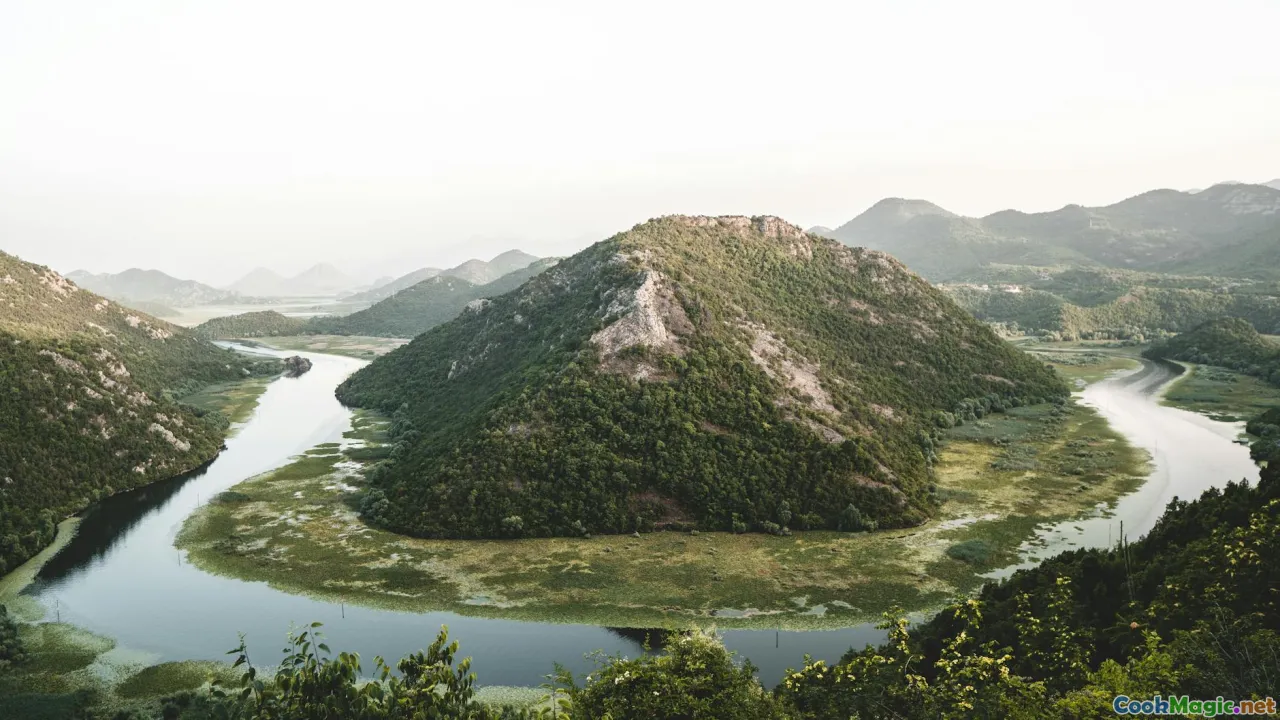Lake Skadar Carp and Its Culinary Importance
8 min read Discover the rich culinary tradition of Lake Skadar carp, its cultural significance, and how it flavors Montenegrin cuisine with tradition and taste. May 11, 2025 03:00
Lake Skadar Carp and Its Culinary Importance
Introduction: The Heartbeat of Montenegrin Waters
Imagine standing at the edge of the shimmering Lake Skadar, the largest freshwater lake in Southeastern Europe, where the air is thick with the scent of ripening reeds and the gentle ripple of water whispers stories of centuries past. Among the lake’s abundant treasures, none is more revered than the Skadar carp — a creature that has not only sustained local communities for generations but has also become a symbol of Montenegrin culinary identity.
This article takes you on a journey through the depths of Lake Skadar’s waters, exploring the cultural, historical, and gastronomic significance of its most celebrated inhabitant — the carp. Prepare to experience the sensory delight of authentic Montenegrin dishes, understand the traditions that honor this fish, and discover why the Skadar carp remains a cornerstone of regional pride.
The Cultural and Historical Significance of Lake Skadar Carp
A Legacy Rooted in the Land and Water
Lake Skadar, known locally as 'Skadarsko Jezero,' has been a vital part of Montenegrin life for centuries. Its ecological diversity supports a rich array of flora and fauna, with the carp (Cyprinus carpio) reigning supreme among freshwater fish species. Historically, the lake’s carp was more than just a dietary staple; it was woven into the social fabric of local communities, symbolizing prosperity, resilience, and harmony with nature.
Traditional Fishing Practices
For generations, local fishermen employed age-old methods to harvest carp sustainably. Using traditional nets and traps, they relied on the lake’s natural rhythms, respecting the fish’s breeding cycles. These practices fostered a deep connection between the people and their environment, ensuring that the carp remained abundant and flavorsome.
Conservation and Cultural Preservation
Today, efforts to preserve Lake Skadar’s ecosystem include sustainable fishing regulations and protected areas. These initiatives not only safeguard biodiversity but also preserve the cultural heritage associated with carp fishing and culinary tradition.
The Culinary Journey: From Lake to Plate
The Unique Flavor Profile of Skadar Carp
Montenegrin chefs and home cooks alike prize Skadar carp for its delicate, slightly sweet flavor and tender, flaky flesh. When cooked properly, it offers a perfect balance of richness and freshness, with subtle earthy undertones that echo the lake’s pristine waters.
Cooking Techniques and Traditional Dishes
While modern kitchens may experiment with various methods, traditional Montenegrin recipes highlight simplicity and respect for the fish’s natural qualities.
1. Carp under Salt (Sope Pile)
One of the most iconic dishes, this preparation involves stuffing a whole carp with herbs, lemon, and garlic, then encasing it in a thick layer of salt before baking. The result is a moist, flavorful fish with a perfectly tender texture, its natural juices sealed in by the salt crust.
2. Grilled Carp
Freshly caught carp is often grilled over open flames or charcoal, seasoned lightly with herbs and olive oil. The smoky aroma complements the fish’s natural sweetness, creating a sensory feast.
3. Carp Stew (Riblja Čorba)
A hearty, rustic stew made with chunks of carp, vegetables, and local spices. The slow cooking process deepens the flavors, resulting in a comforting dish that evokes the warmth of Montenegrin hospitality.
The Role of Local Ingredients
Montenegrin cuisine emphasizes the harmony of flavors. Herbs like rosemary, thyme, and bay leaves, along with locally produced olive oil and fresh vegetables, enhance the carp’s natural taste without overpowering it.
Personal Reflections and Cultural Anecdotes
A Family Tradition
Growing up in a Montenegrin village near Lake Skadar, I remember family gatherings where carp was the centerpiece of our tables. My grandmother’s hands would expertly clean and prepare the fish, filling the kitchen with a fragrant aroma that promised a memorable meal. Those moments, filled with laughter and stories, cemented my love for this fish and its cultural significance.
Celebrations and Festivals
Every year, local festivals celebrate the lake’s bounty, with carp dishes played a starring role. These events foster community spirit and connect generations through shared culinary heritage.
The Modern Twist
Contemporary chefs are now exploring innovative ways to honor this traditional ingredient, from carp sushi to fusion dishes inspired by global cuisines. Yet, the essence remains rooted in respect for the fish and the lake’s ecological balance.
Why the Lake Skadar Carp Matters Today
A Symbol of Sustainability and Cultural Identity
Preserving the tradition of carp fishing and cuisine highlights a broader commitment to ecological sustainability and cultural resilience. The fish embodies a harmonious relationship between humans and nature that Montenegrins cherish.
An Economic Asset
Tourism centered around Lake Skadar’s culinary offerings attracts visitors eager to taste authentic dishes, supporting local economies and promoting cultural exchange.
A Source of Inspiration
For chefs, food enthusiasts, and conservationists alike, the Skadar carp serves as a reminder of the importance of respecting our natural resources while celebrating our culinary heritage.
Conclusion: Savoring the Spirit of Lake Skadar
The story of Lake Skadar carp is a testament to the enduring power of tradition, nature, and gastronomy. It exemplifies how a simple fish can carry profound cultural significance and inspire culinary innovation. For Montenegrins, the carp is more than just a delicacy; it’s a symbol of their bond with the lake, their history, and their future.
Next time you savor a piece of grilled Skadar carp or relish a hearty stew, remember the centuries of tradition and love embedded in every bite. It’s a taste of Montenegro’s soul, captured in the waters of Lake Skadar and on your plate.









